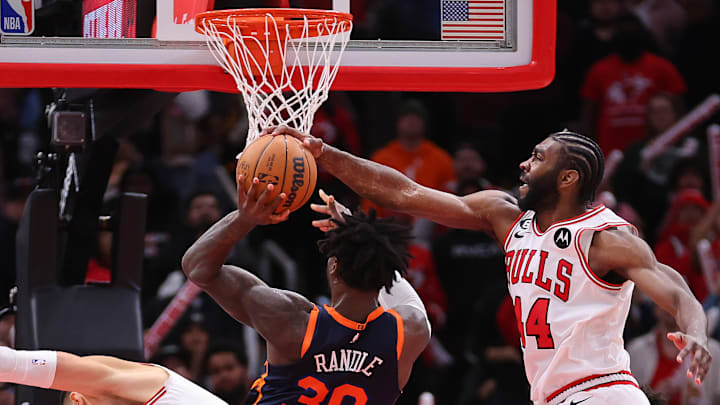There's no dodging the criticisms of Patrick Williams—he's been labelled "underwhelming," "lost confidence," and even worse. Those criticisms are partly fair. But they underestimate what Williams could become with a fresh frame, clearer role, and renewed confidence.
Let's flip the script and see this offseason not as a reboot, but perhaps a transformation. The Bulls need to give him a defined role, one that matches his evolving tools, since this new version of Williams could very well be the glue wing they've not so quietly yearned for.
Patrick Williams said he slimmed down on purpose. Won’t reveal weight but said he focused on lean muscle. Said his whole offseason started with hard look in the mirror: “I need to be better.”
— K.C. Johnson (@KCJHoop) October 2, 2025
This offseason, Williams didn't just trim down—he reshaped himself. Slimming down is more than cosmetic: it can unlock quicker footwork, better endurance, improved lateral mobility, and defensive versatility. But more than improvements, this could transform his game.
Competency over creation: Defining the "glue wing" tasks
With that physical shift, his tools become entirely different weapons. His physical change makes him a better "short roll" player (slipping screens and making quick passes) or an even more effective switch defender.
He doesn't need to be a primary scoring option—he can become the perfect fit, whether as a starter or in the closing five, executing the small, vital things that elevate a squad, like always making the extra pass out of a drive, or the discipline to box out on the weak side. If the Bulls define his role, Williams can settle into being that glue wing who rebounds, screens, facilitates beyond scoring, and gets easier baskets through cutting—not highlight-worthy one-on-one moves, but smart movement and presence. Instead of chasing volume, he can cut down, pop out, set a screen, then slip or pop.
The perfect complement to the Bulls' new playmakers
That versatility in the half-court would give coaches more flexibility in lineups and allow him to thrive in spurts without overexposure. For Josh Giddey and Matas Buzelis, the timing is perfect. Giddey needs a wing who can complement his orchestration. With Williams cutting and setting screens, Giddey's passing corridors expand.
Buzelis benefits when opposing bigs are drawn out by Williams' shooting or movement, giving Matas room to operate, post up, or slash. Williams' matured game could magnify their strengths rather than compete with them.
The real payoff lies in his mindset. If he succeeds in this role, it could unlock a confidence we've rarely seen from him in recent seasons. Suddenly, the "bust" label fades—he becomes the X-factor: that wing who does the dirty work, allows others to shine, and emerges quietly as a reliable presence.
Trading Williams now would risk losing someone whose body, mindset, and situational role might finally align. The Bulls must resist the urgency to cut bait. Instead, they should define his role, give him the chance to transform, and see whether Williams can turn from miscast talent into irreplaceable glue. Because if he nails just 70–80 percent of that vision? That's already a rotation piece worth standing by.
